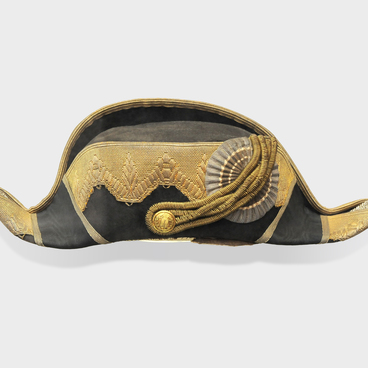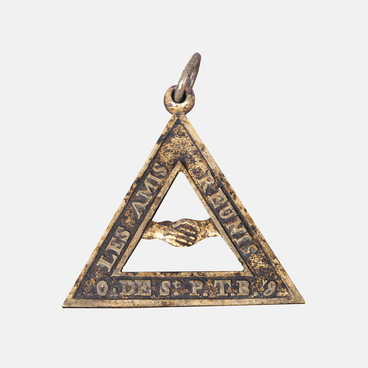The Ulyanovsk Regional Museum of Local Lore named after Ivan Goncharov presents a kalkan — a shield of Eastern origin.
In the 16th–18th centuries, such shields were popular in Persia, the Ottoman Empire, the Crimean Khanate and Central Asia, and they could also be found in Eastern Europe, namely Hungary and Poland. The wicker shield is usually 60–70 centimeters in diameter. It is concavo-convex, lightweight and quite durable. Fabric is glued over the withes on the reverse side. A square hand-pad is riveted to the center by metal loops. In addition to the loops supporting the pad, there are six more loops with rings, through which twisted silk chrds are passed. There is a fabric lining inside with cross-shaped belts in the center and a side strap — this helps to hold the shield firmly on the forearm and free the hand, if necessary. There was also a narrow belt for carrying the shield on the side or behind the back.
The kalkan was inspired by the Mongols, who had many shields of this kind due to the lack of wood necessary for their manufacture. Because of this, the kalkans became widespread wherever the Mongols brought them. In the Balkans and Poland, the kalkan was widely used as protection against horse archers who made up a great part of the troops of the Crimean Khanate and the Ottoman Empire. Oftentimes, the Cossacks brought such shields with them as trophies.
The shield presented in the exhibition supposedly belonged to the Cossacks of Stepan Razin. As a rule, the kalkan was used by mounted archers as a means of protection against return fire. Such a shield was ineffective against gunpowder firearms and quickly wore out in hand-to-hand combat. These shortcomings were compensated by the fact that the kalkan could be easily repaired by replacing damaged withes. In the 18th century, due to the widespread use of firearms, the kalkan finally fell out of use everywhere except in Central Asia. Its design was improved there by adding some metal elements, and the shield eventually became an all-metal structure, used until the second half of the 19th century when Russian troops arrived there.


